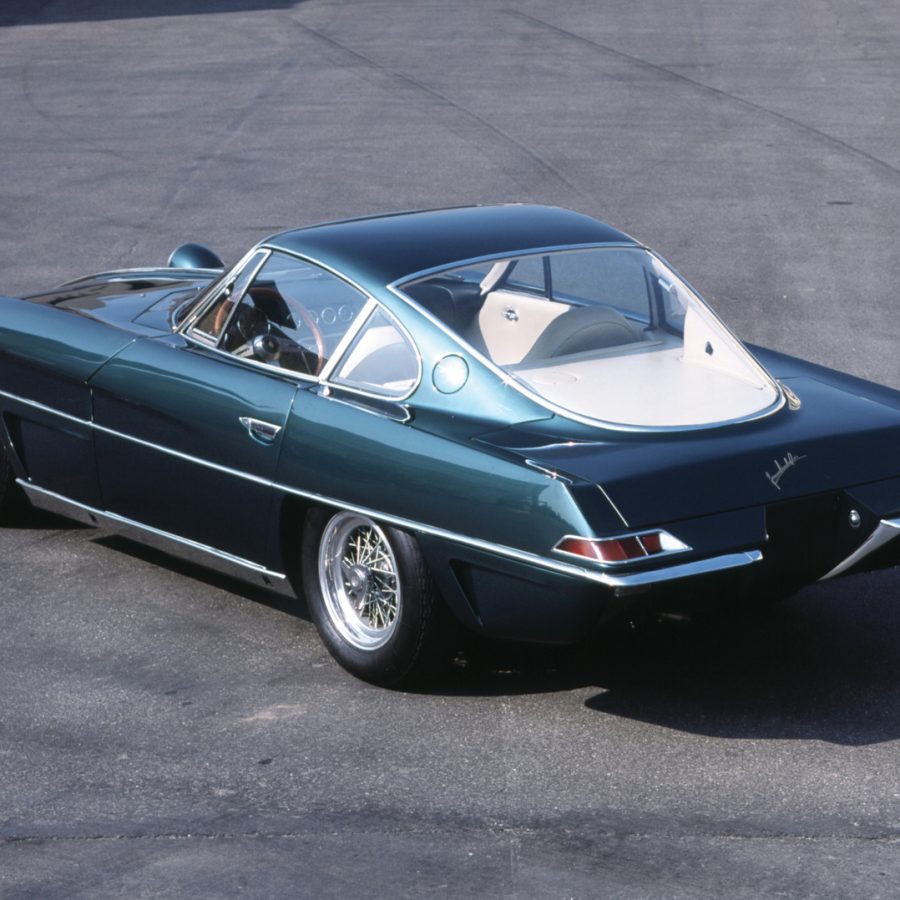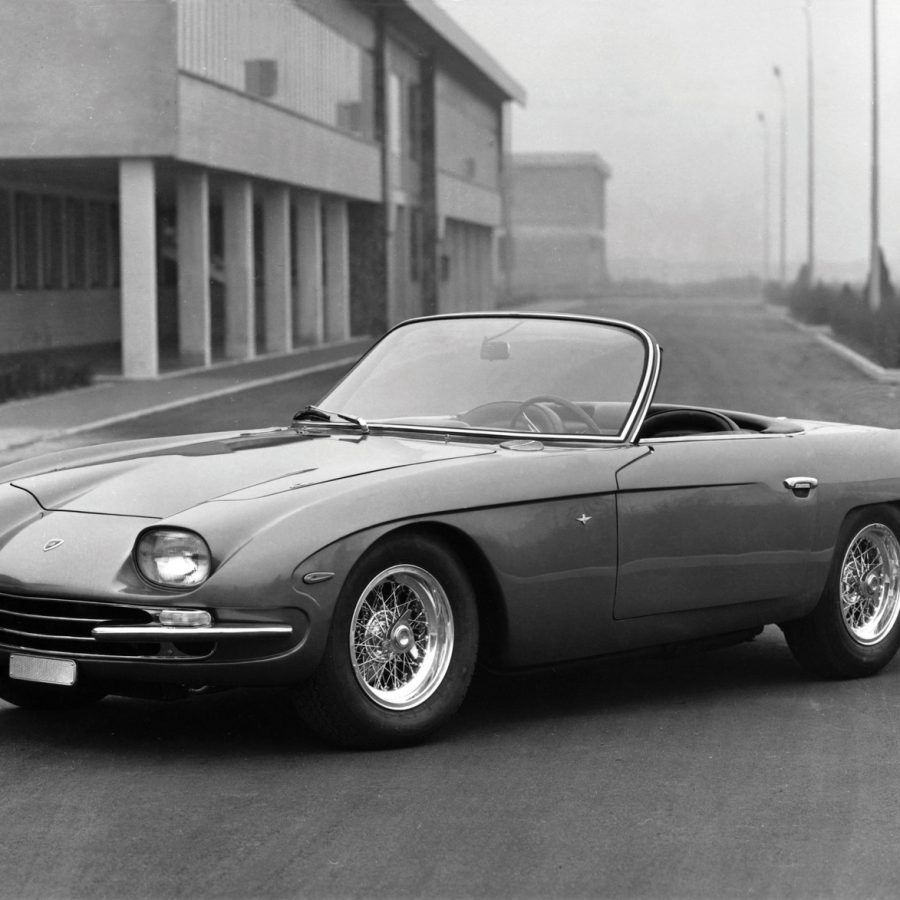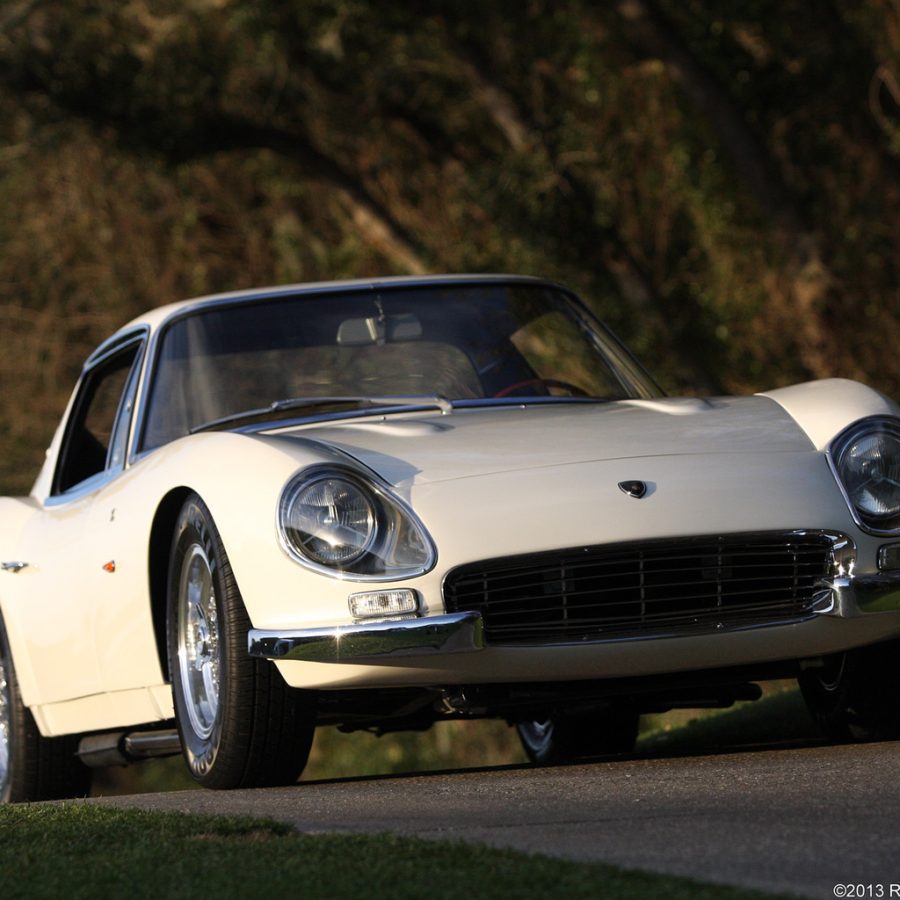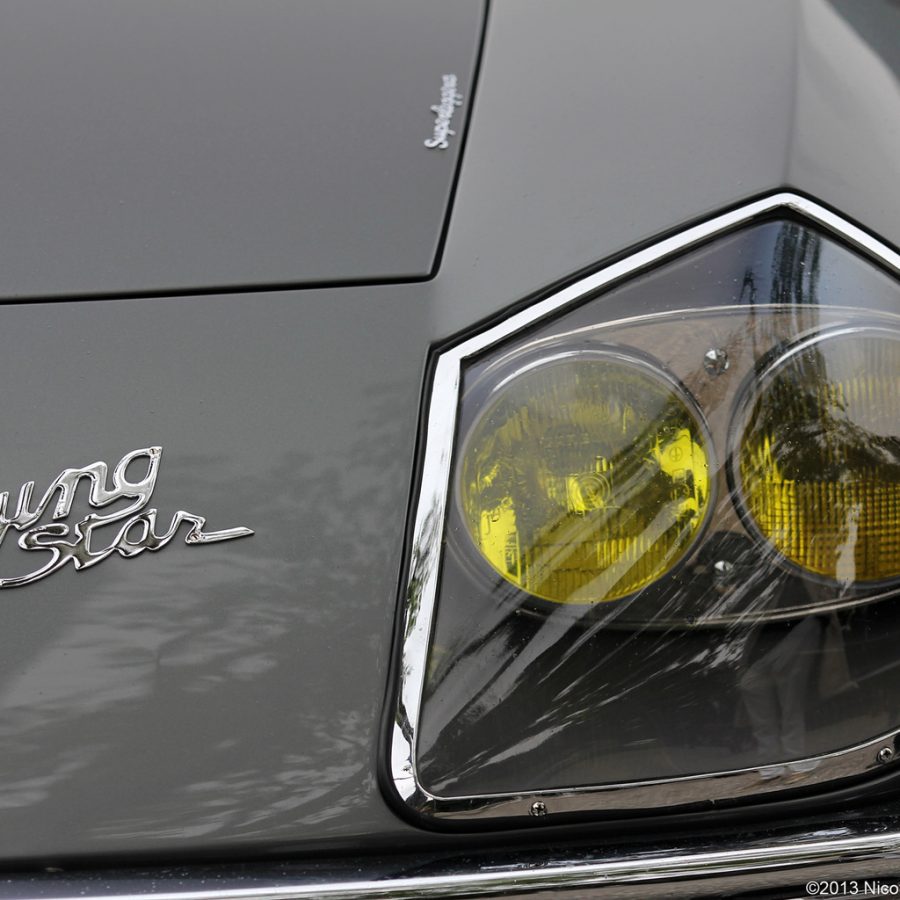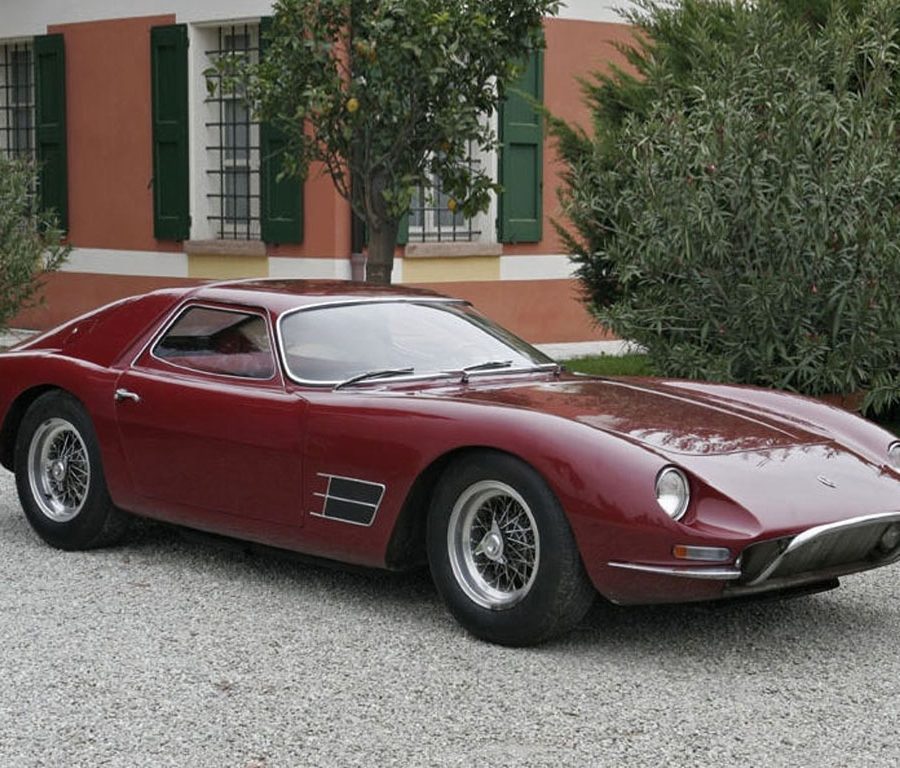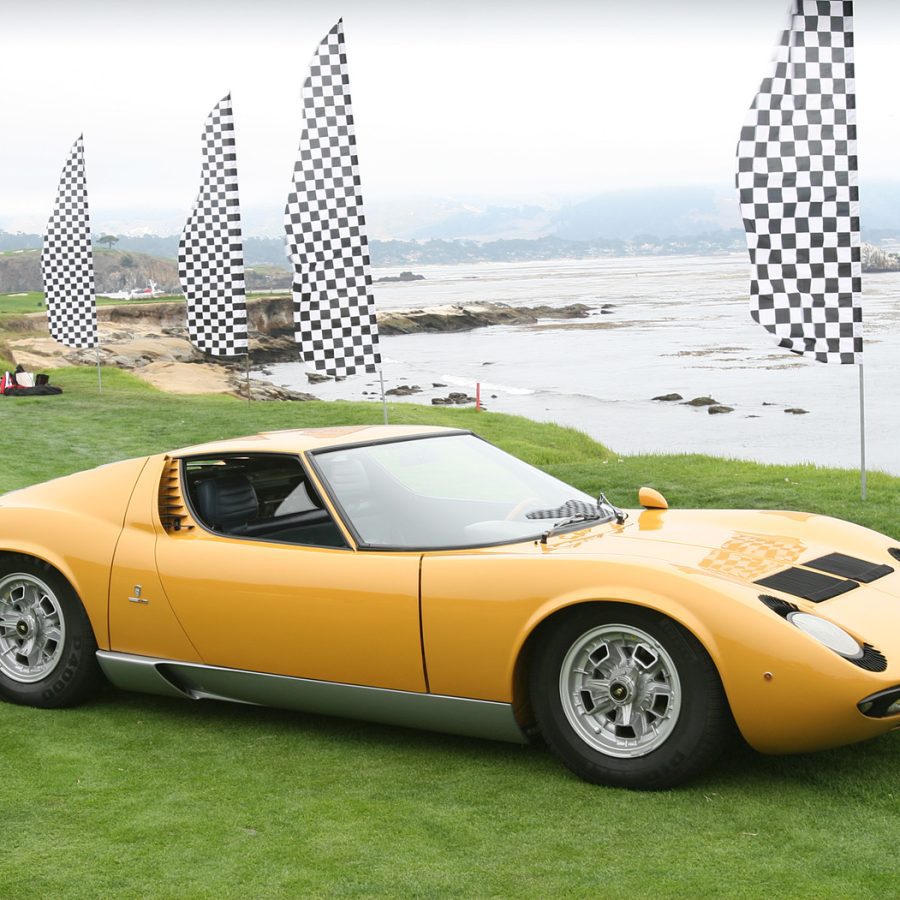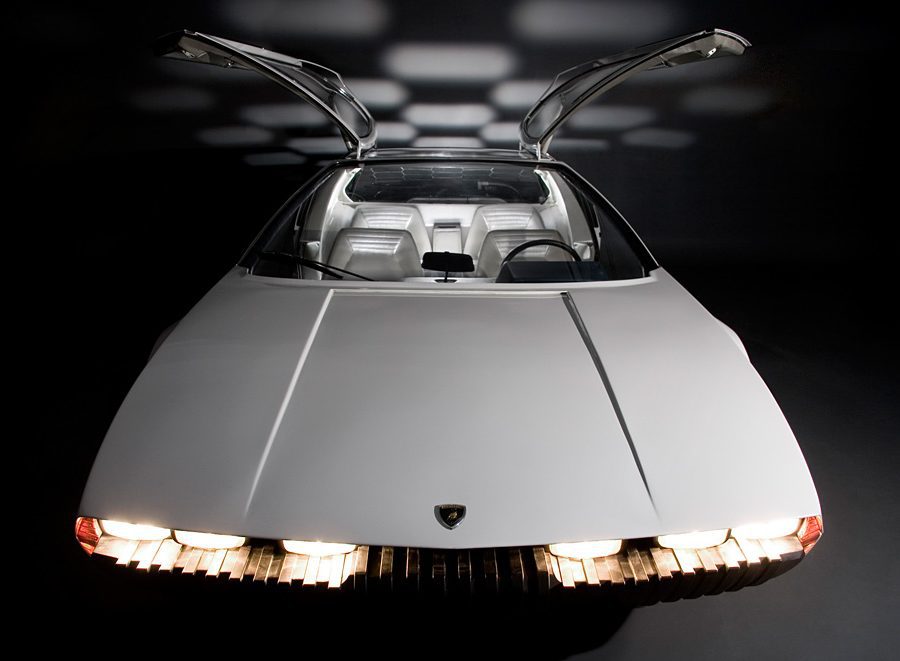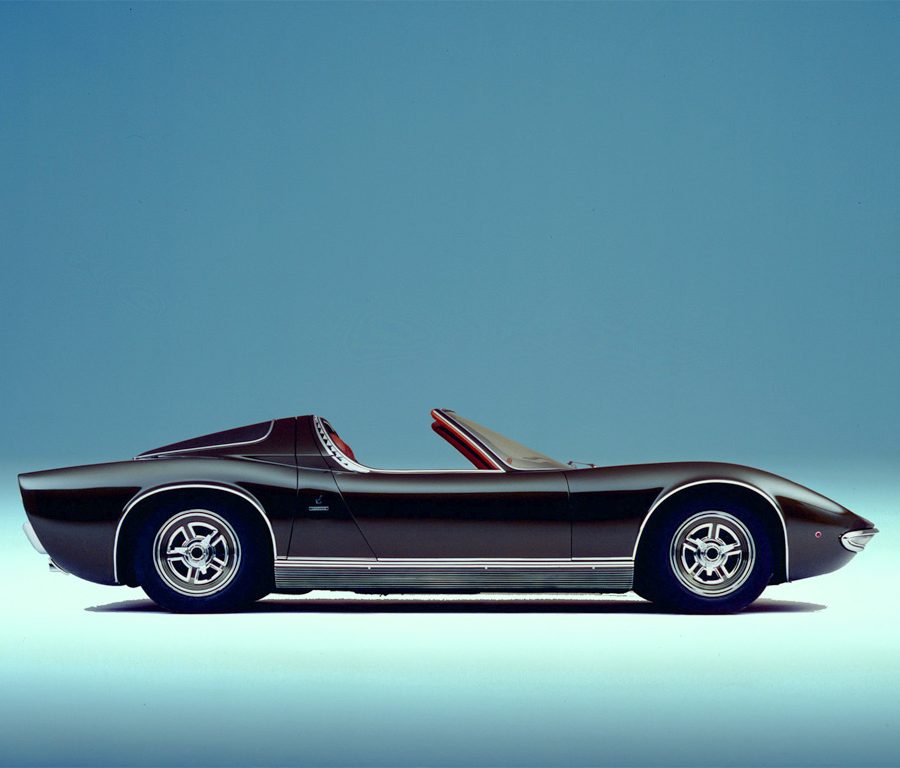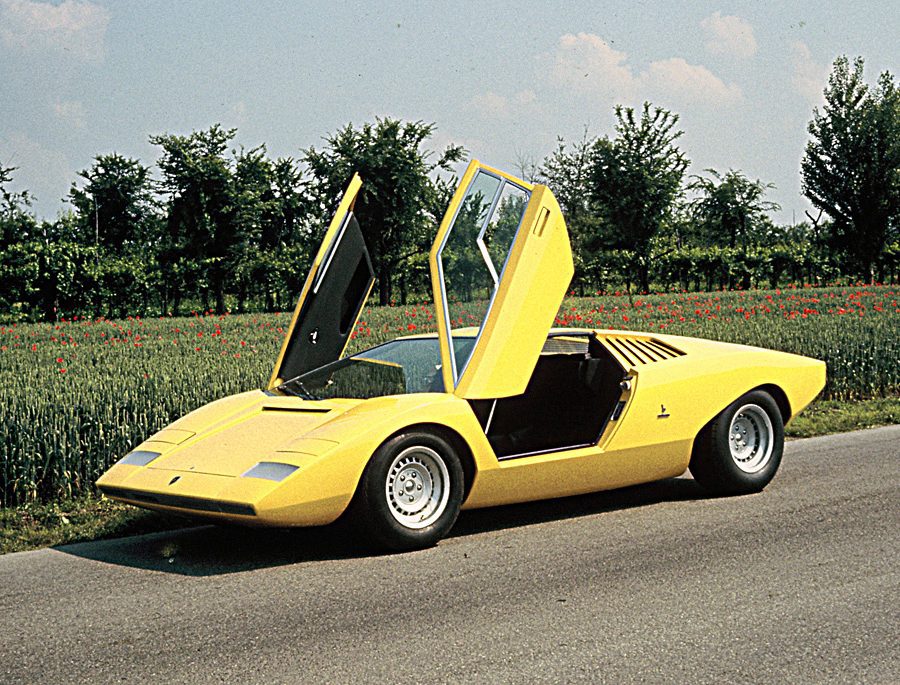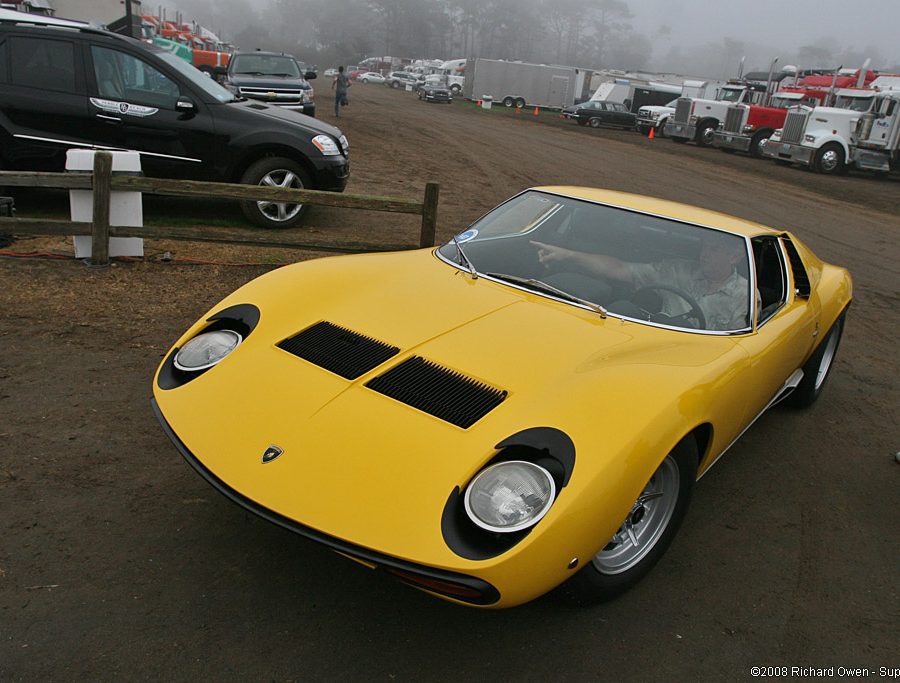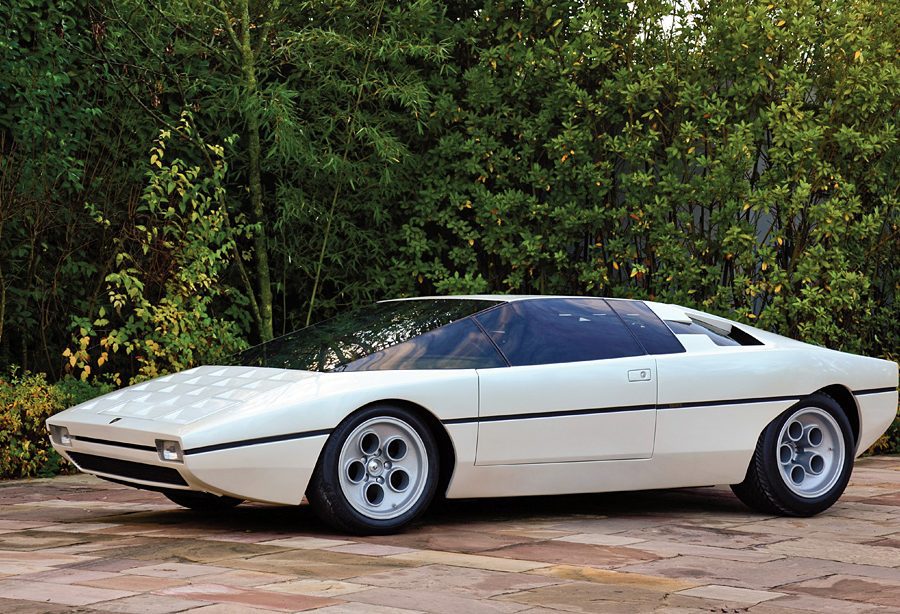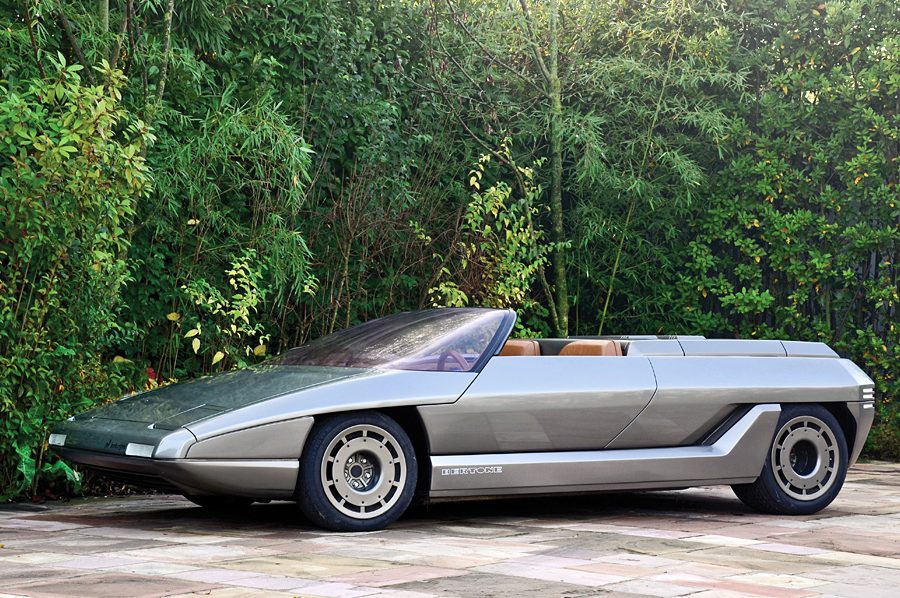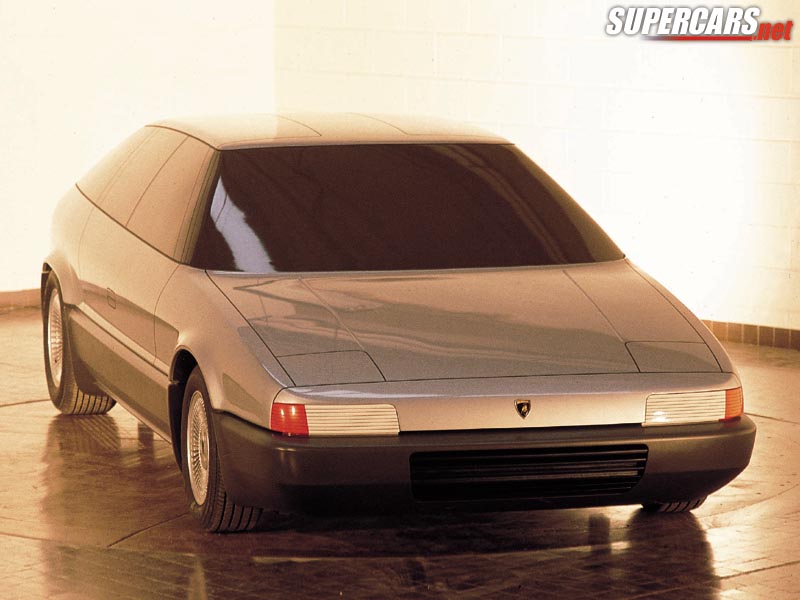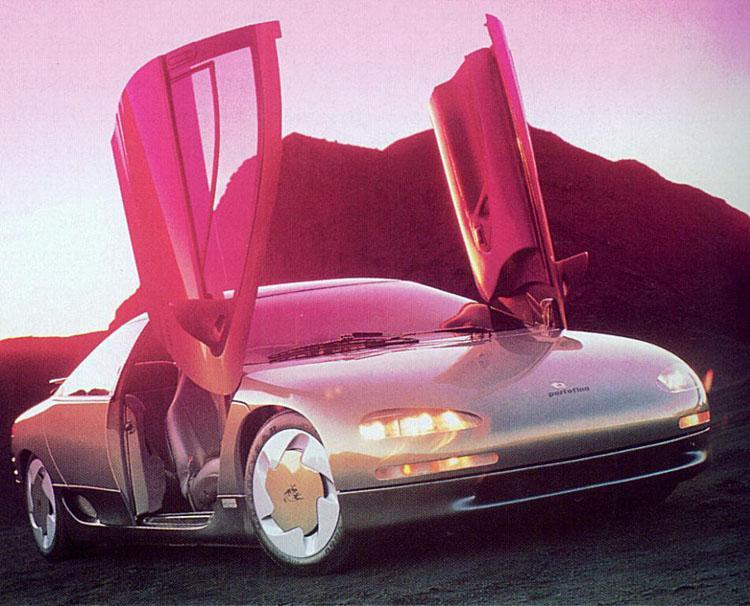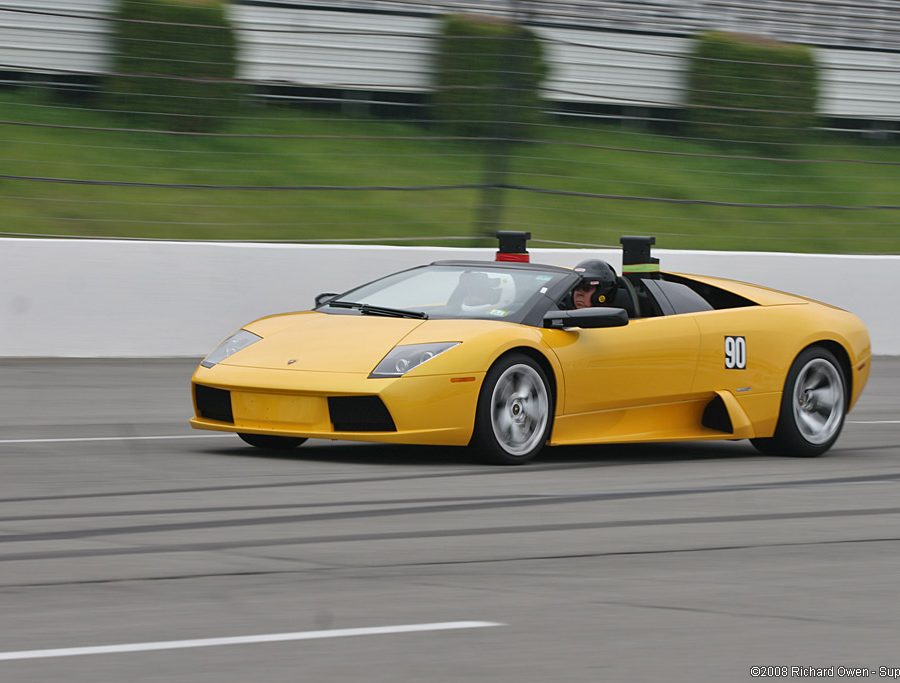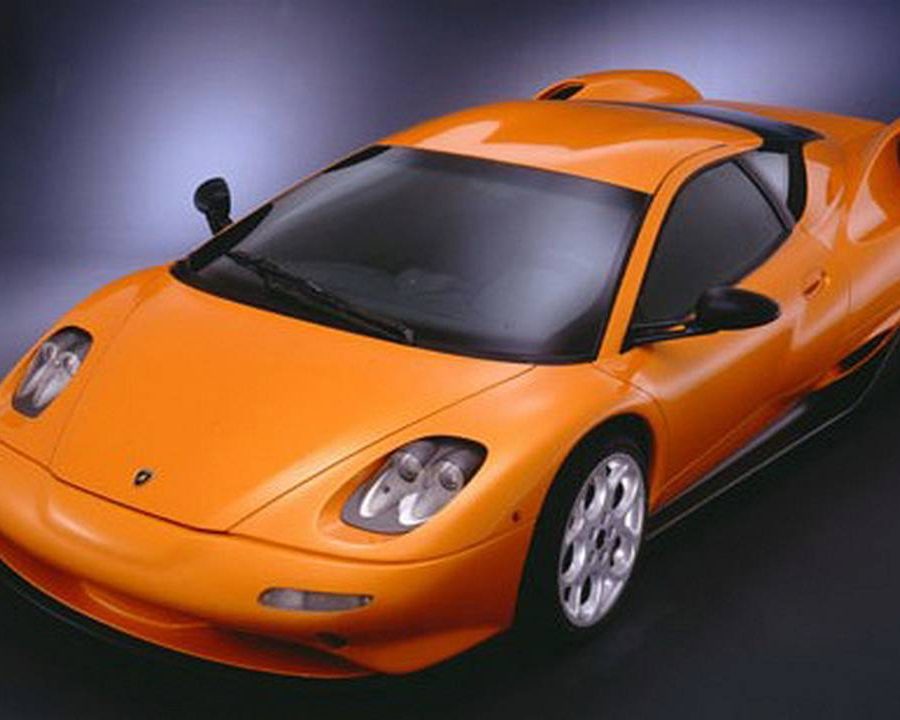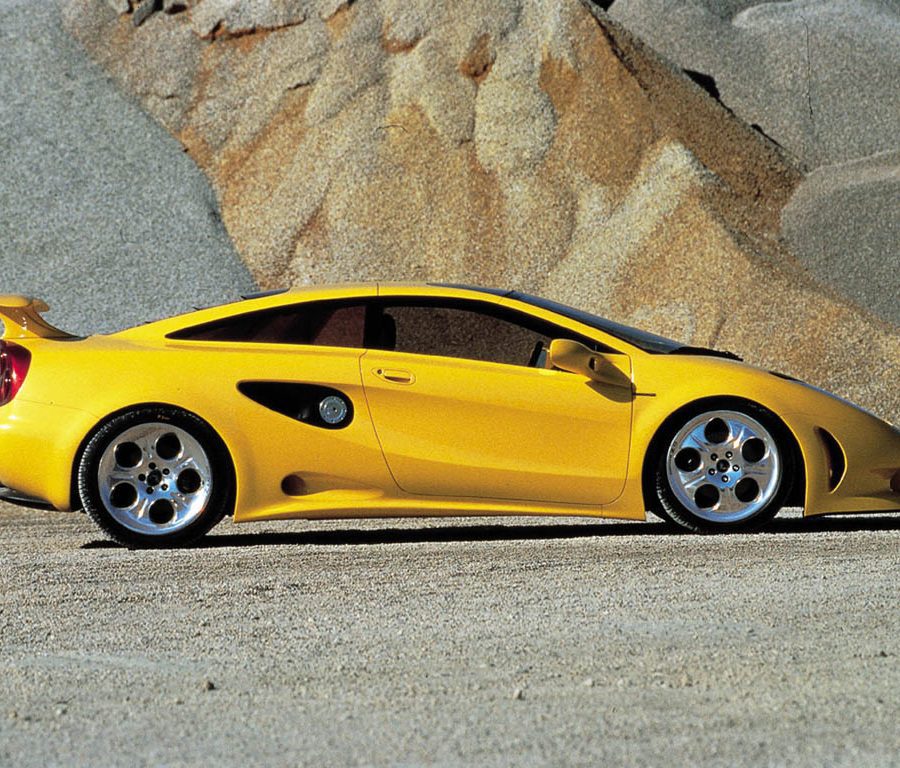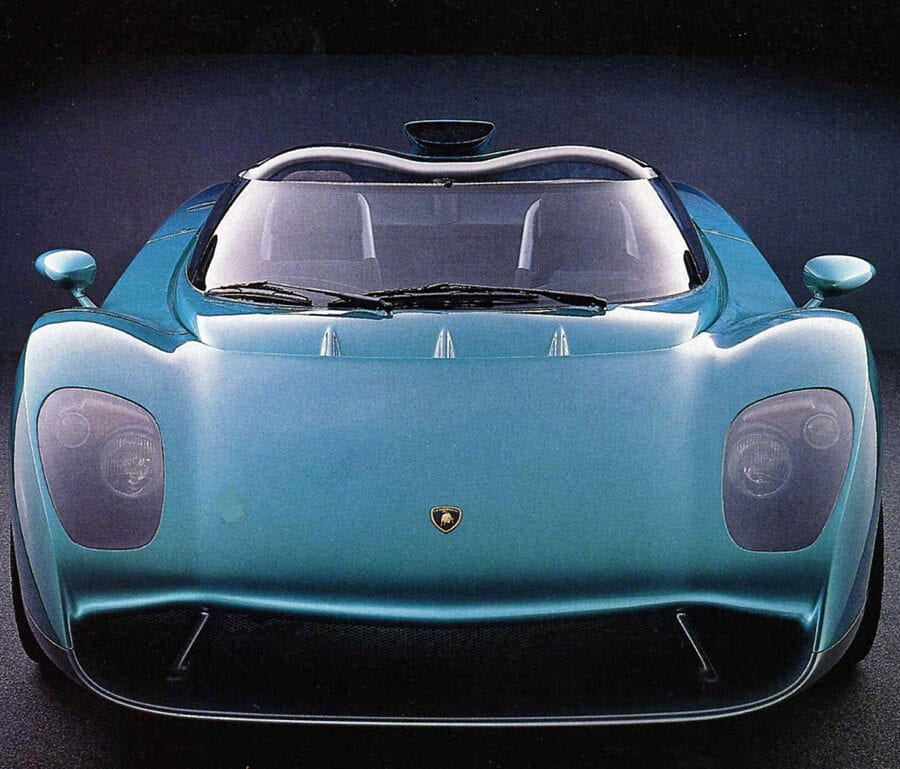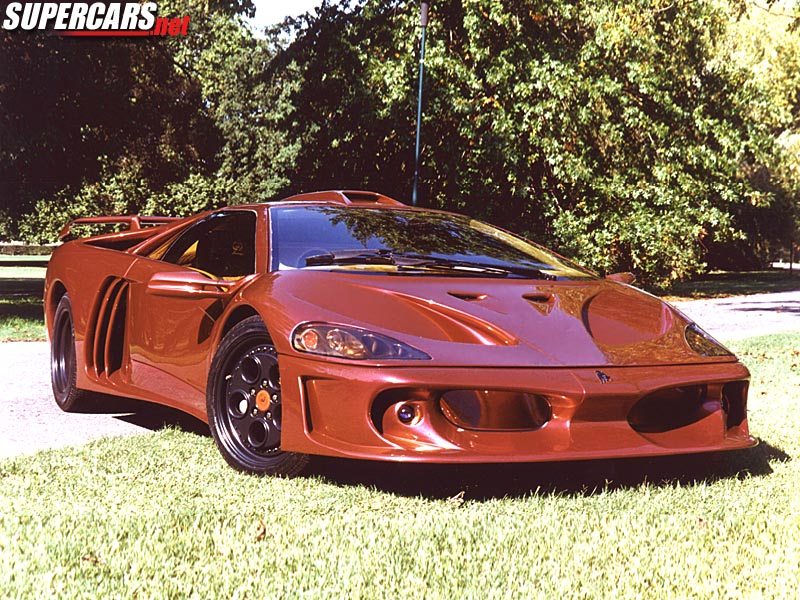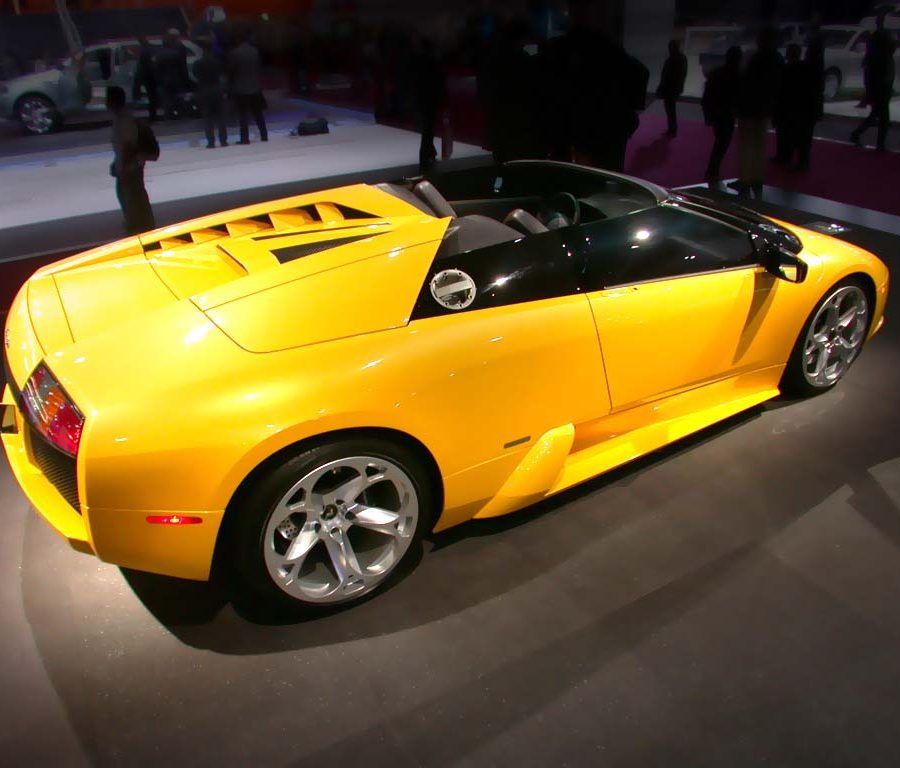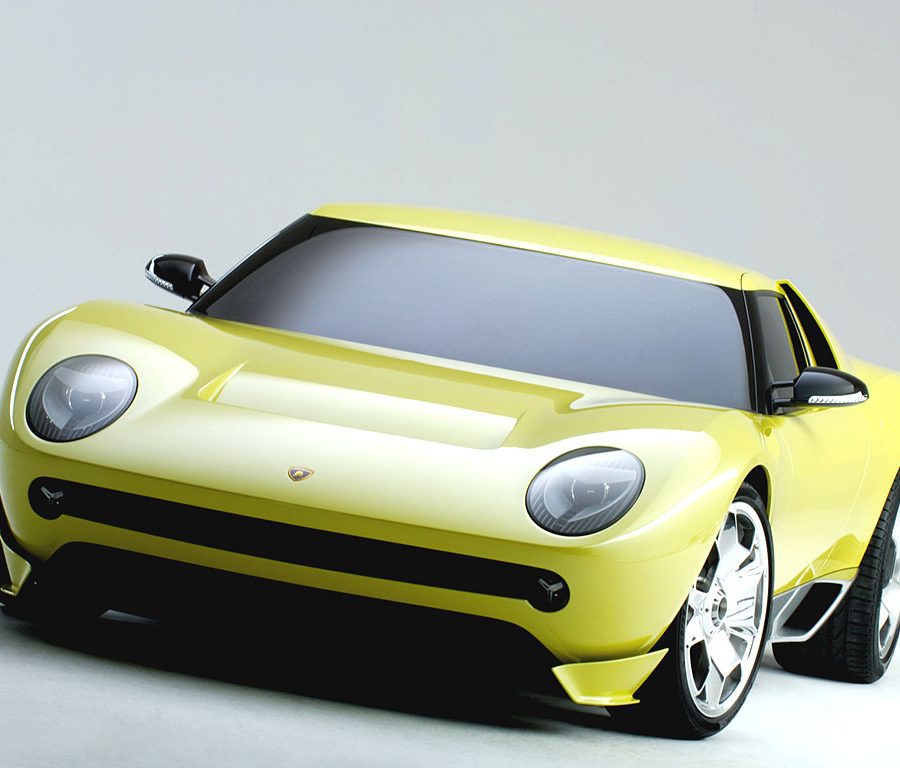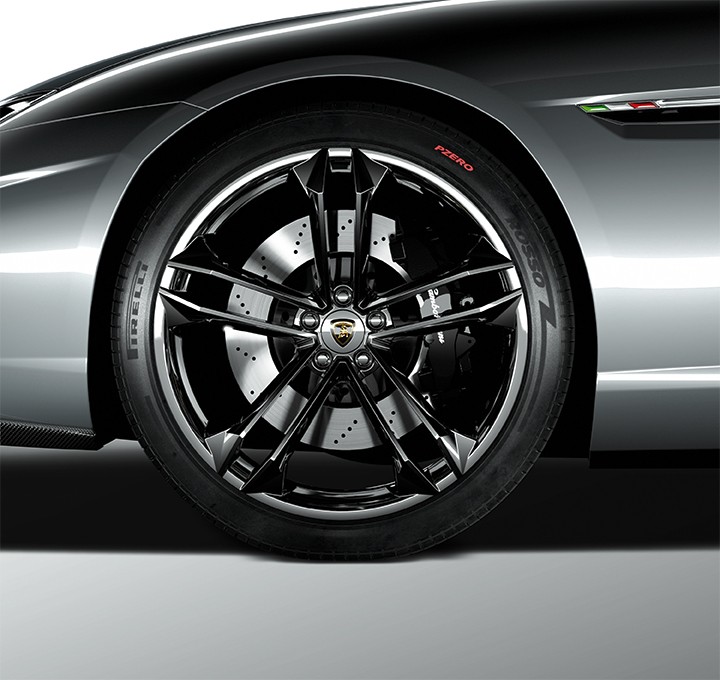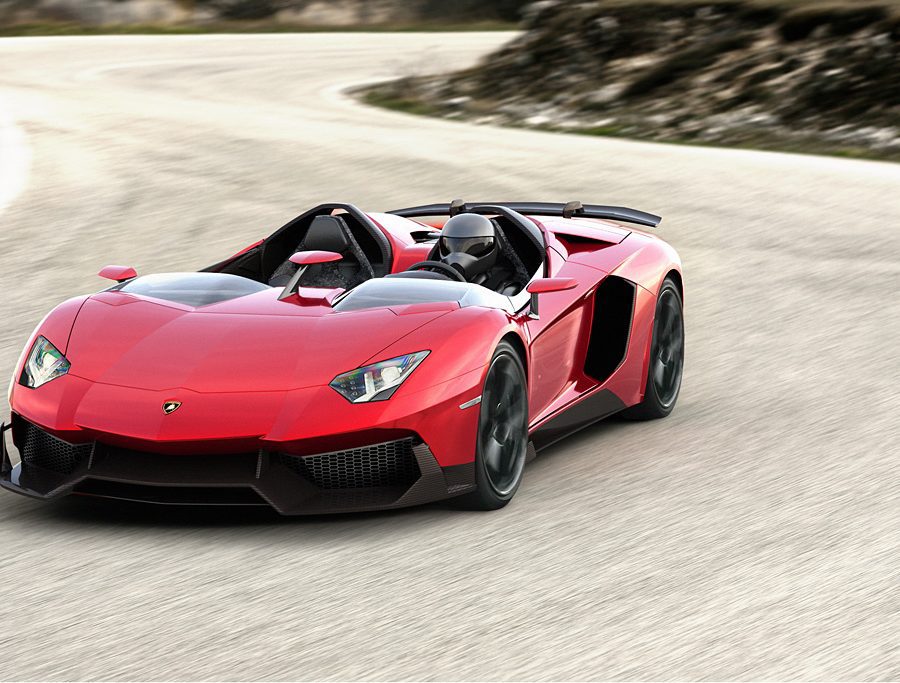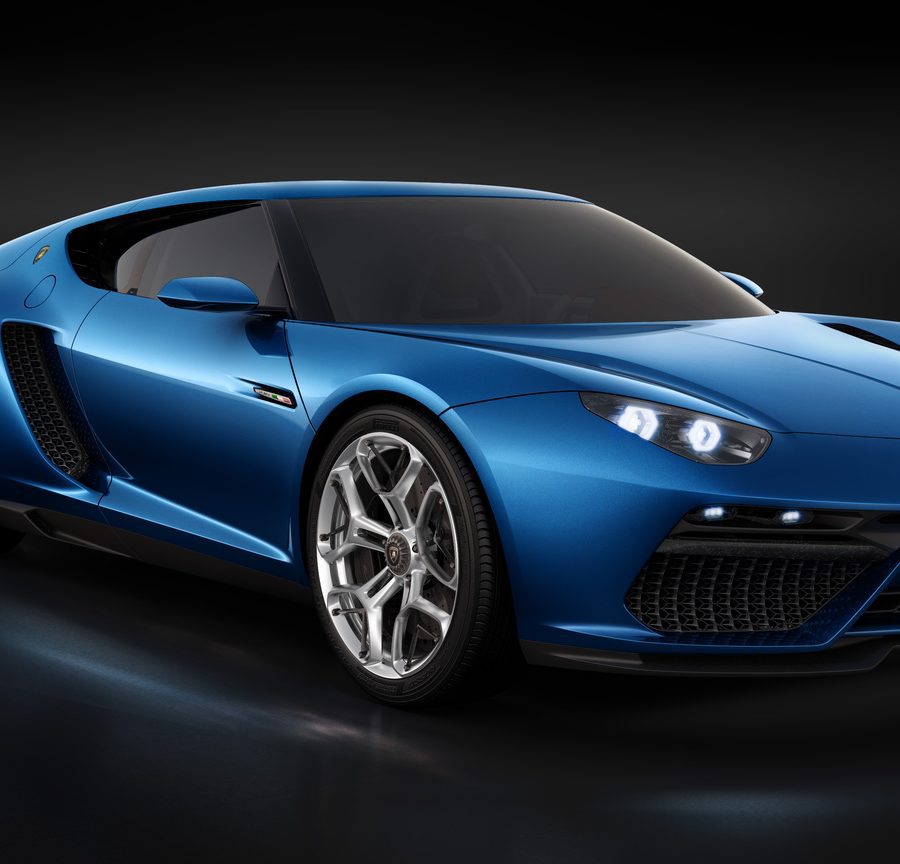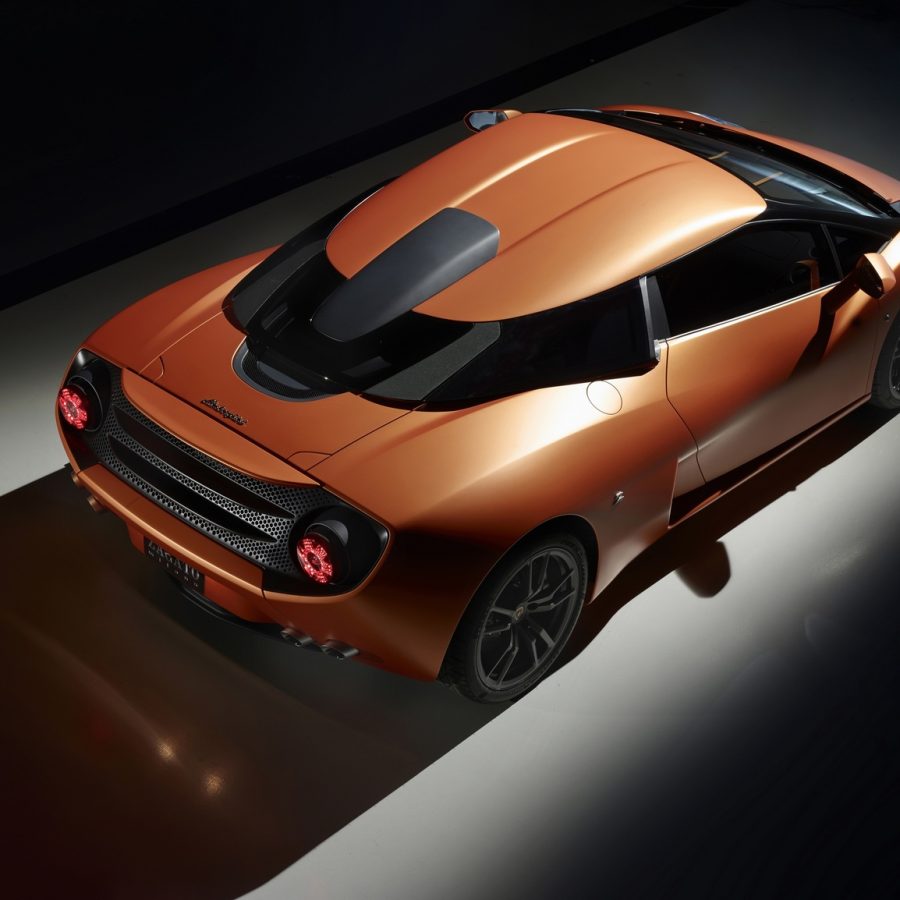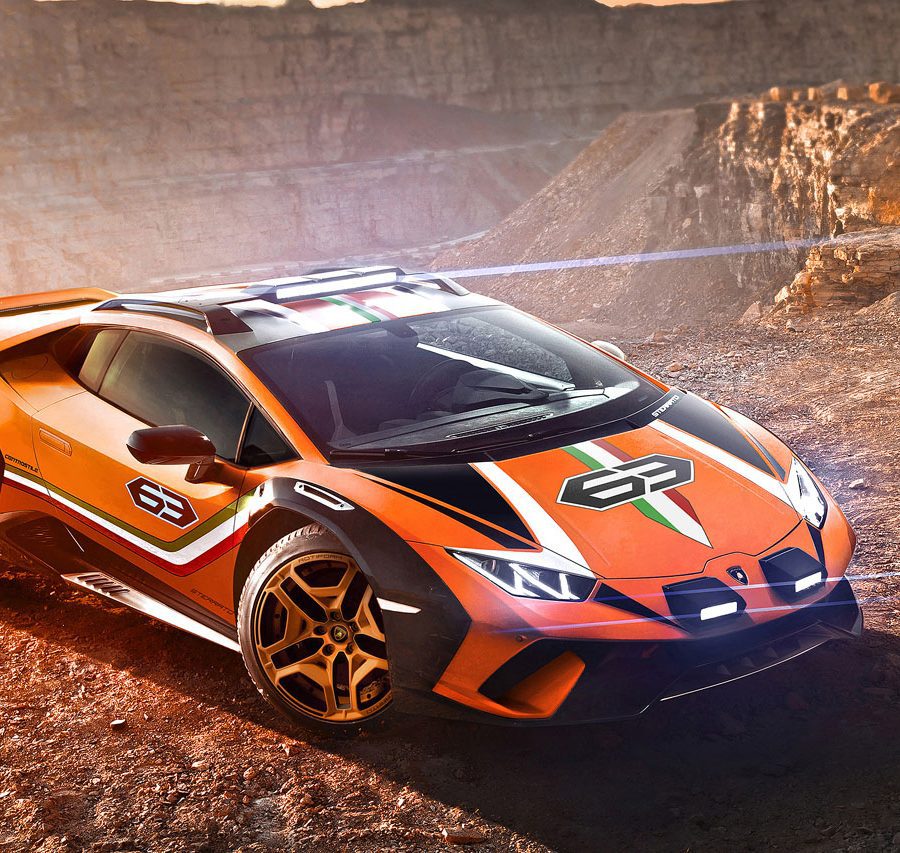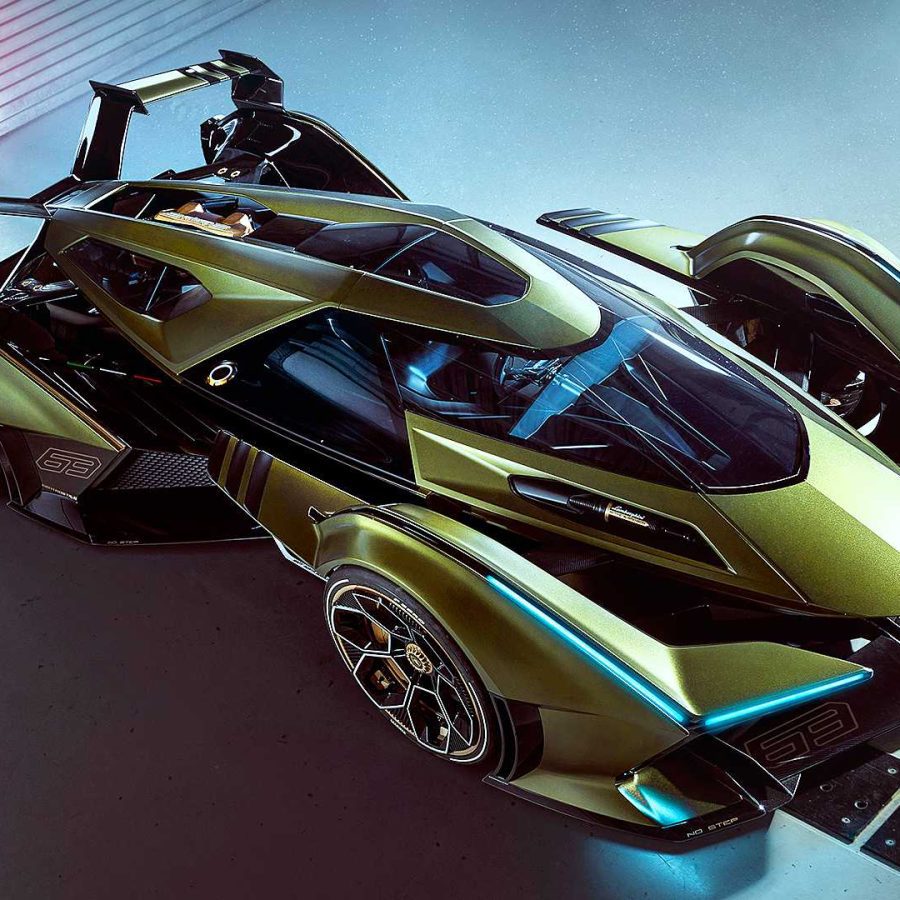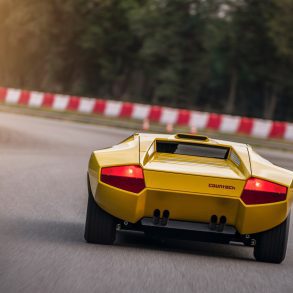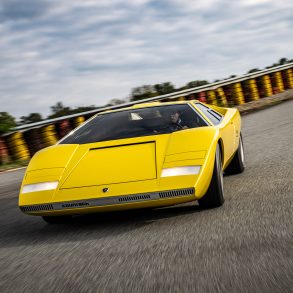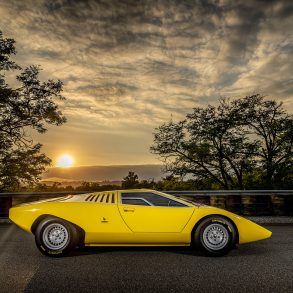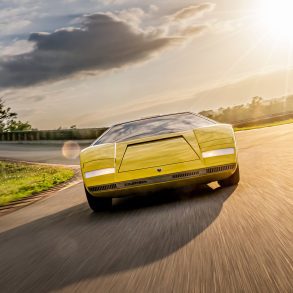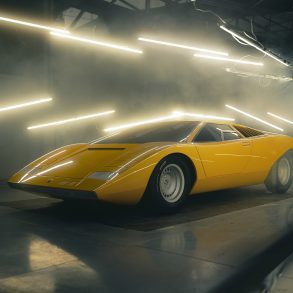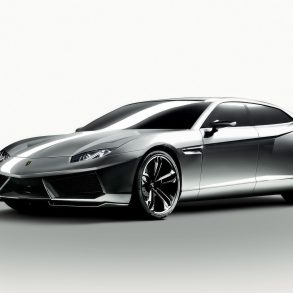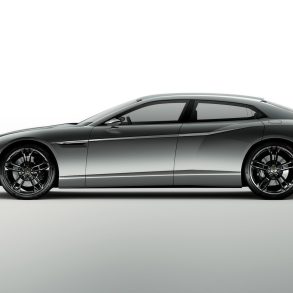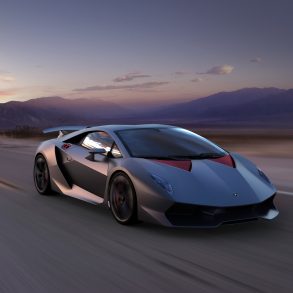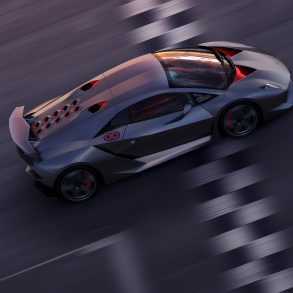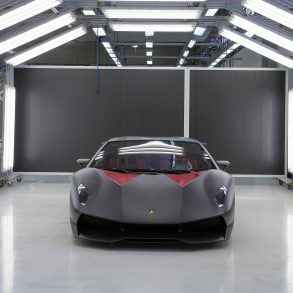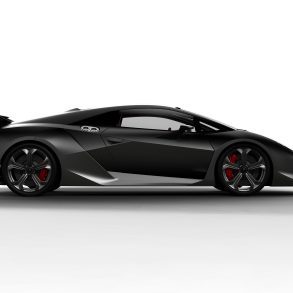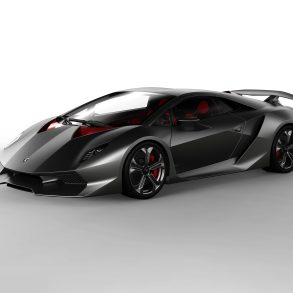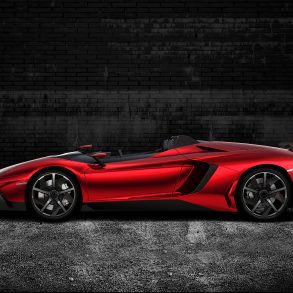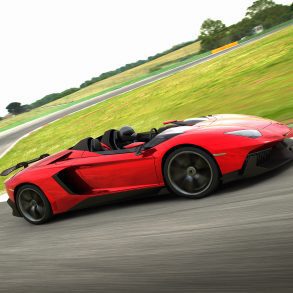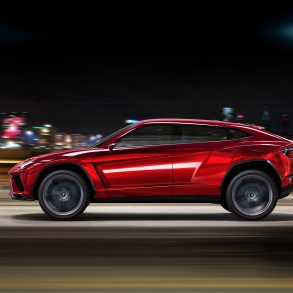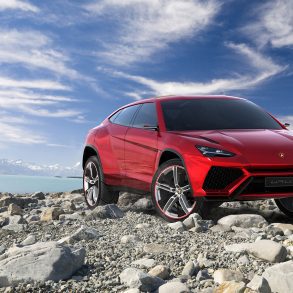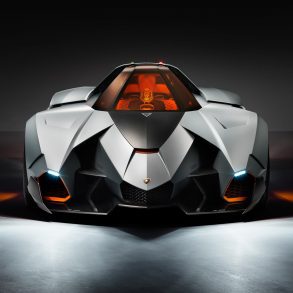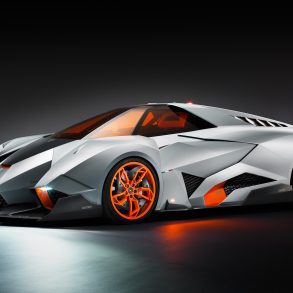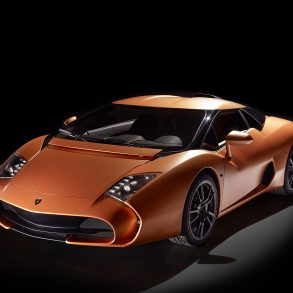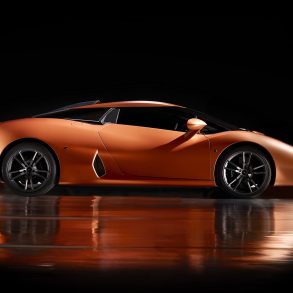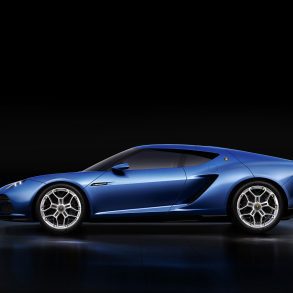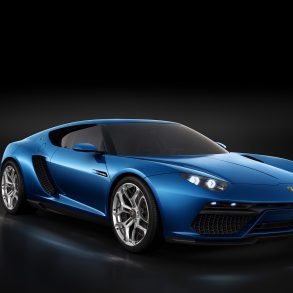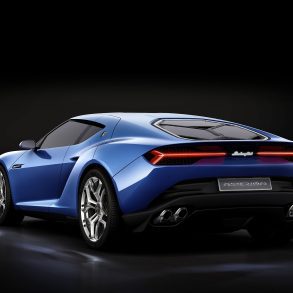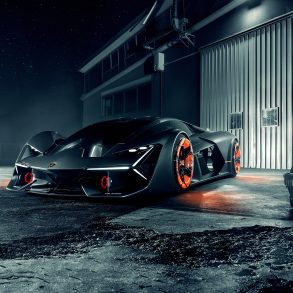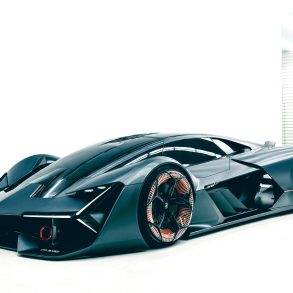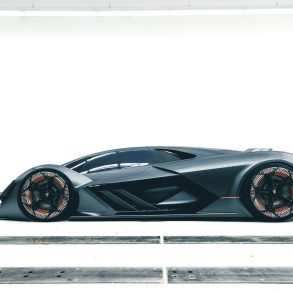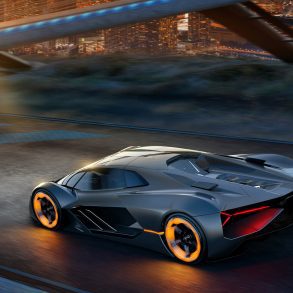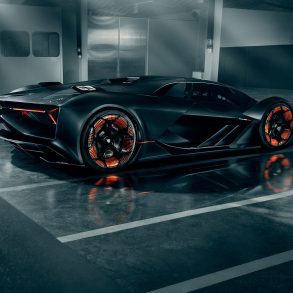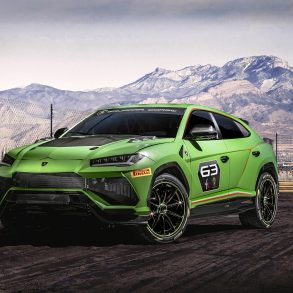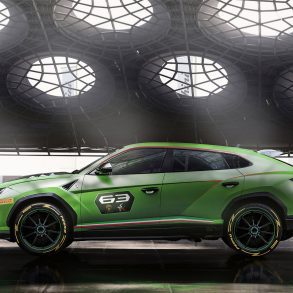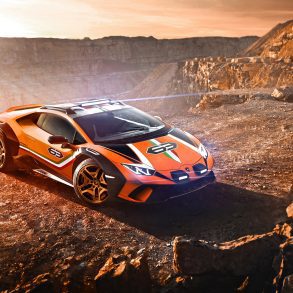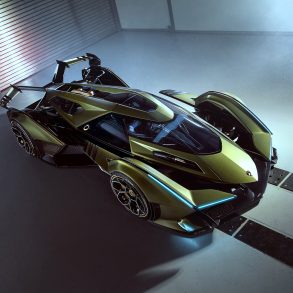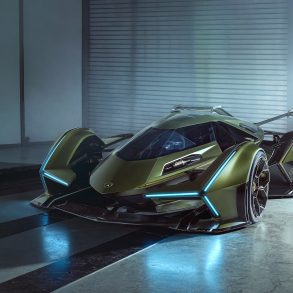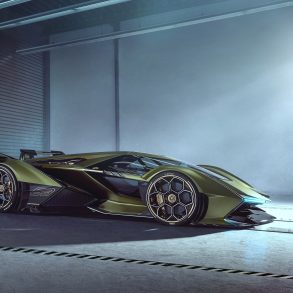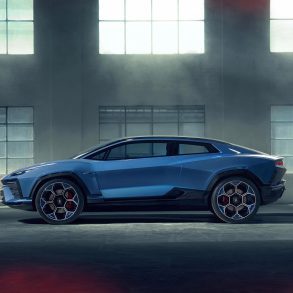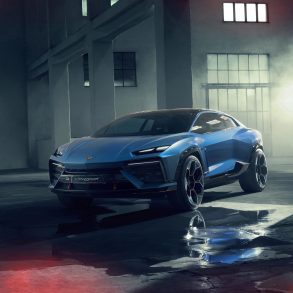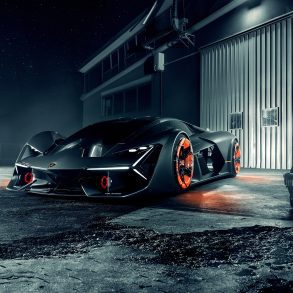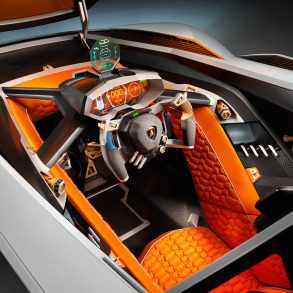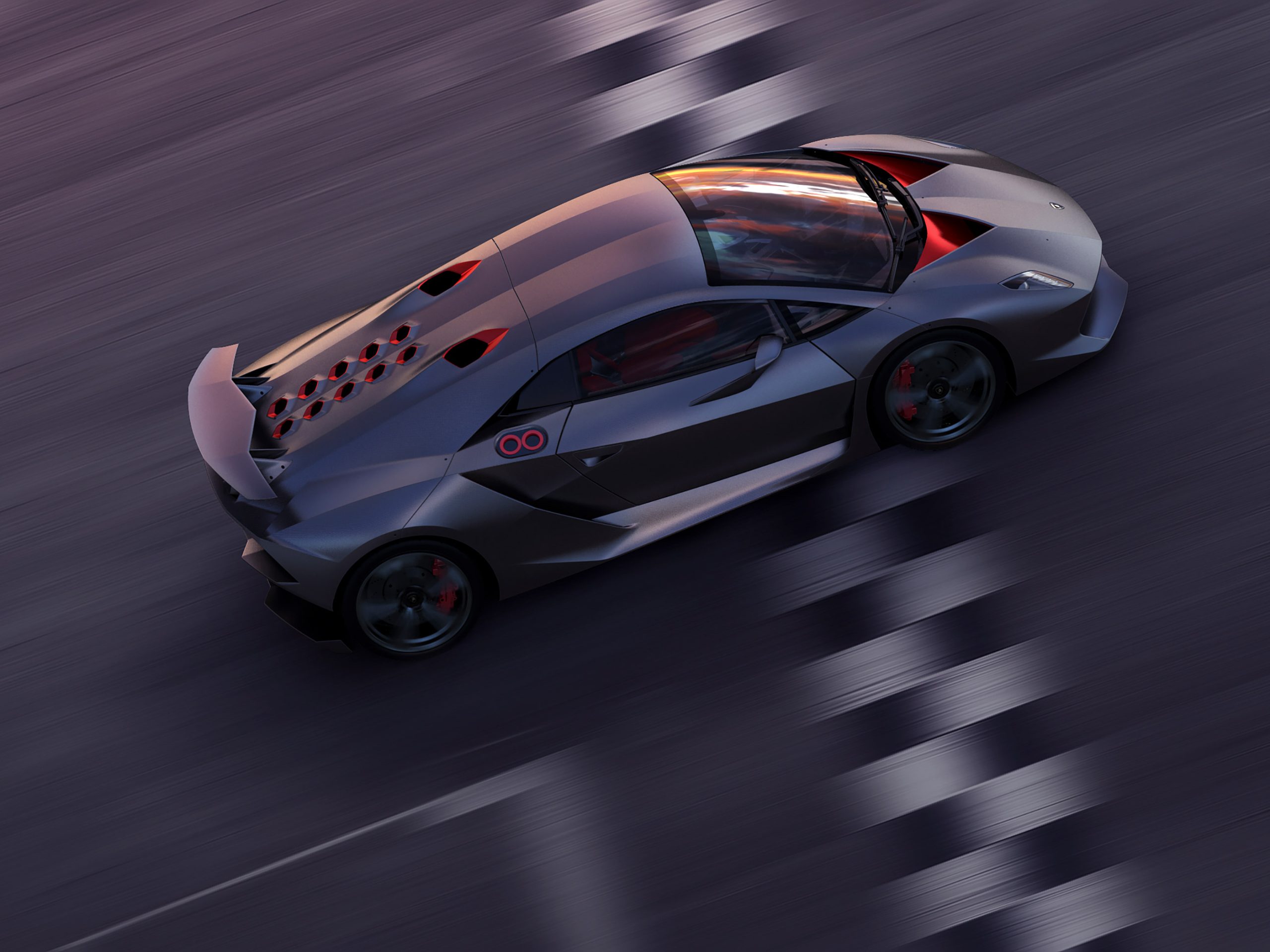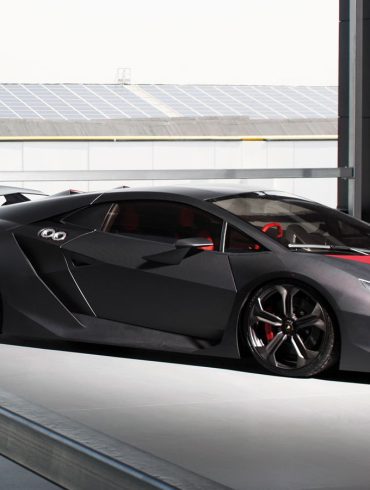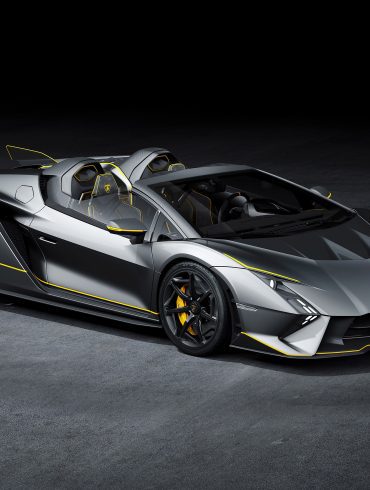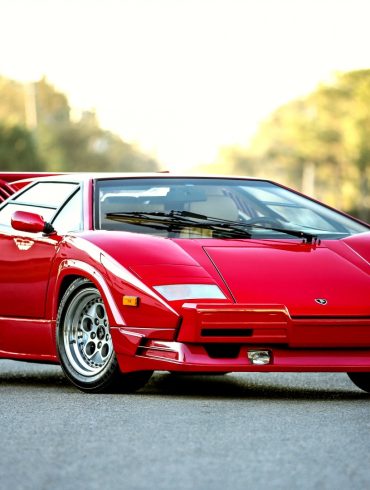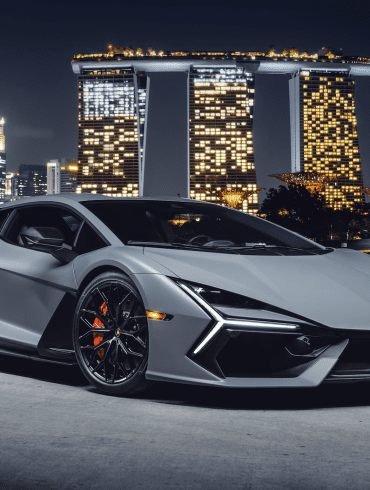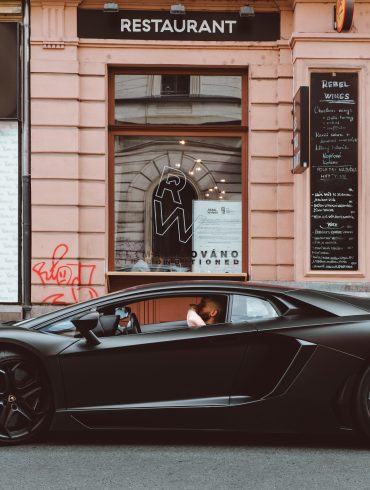Imagine showing up to a car show and a tractor manufacturer shows up with the sexiest car design you have ever seen. That's how things must have felt for consumers at the 1963 Turin Auto Show when they first saw the 350 GTV. A small group of men including Bizzarrini, Scaglione, Neri and Bonacini.
Lamborghini Concept Cars
Every Lamborghini concept car in one place. We look forward to seeing Lamborghini concept cars because the brand can be counted on to push the limits.
Full Model List / Models In-Depth / Image Gallery / Best Lamborghini Concepts
Every Lamborghini Concept & Prototype Ever Made
Every Lamborghini concept car in one place. We look forward to seeing Lamborghini concept cars because the brand can be counted on to push the limits. Lamborghini concept cars are definitely futuristic and extreme vehicles, showcasing technology and designs that we dream of seeing on future production models. The most recent Lamborghini concept was the Terzo Millennio, a concept that Lamborghini says "anticipates the future and projects the emotions of super sports cars into the electrical revolution era". This design has a lot in common with Lamborghini concept cars over the decades in that it features futuristic lines and suggests advanced technological solutions that hint towards both the near and long term future of the brand. Unlike most manufacturers, Lamborghini has a small lineup with only a handful of new models per decade, so the brand likes to make their model reveals more momentous and even fills the odd years in between with a concept that is so far out there that it gets us all excited. Below, we take you through the full list of Lamborghini prototype and concept cars, including some developed by third parties like Zagato.
Lamborghini 350 GTV (1963)
Lamborghini 350 GTS (1965)
Lamborghini 3500 GTZ (1965)
Lamborghini Flying Star II (1966)
Lamborghini 400 GT Monza (1967)
Lamborghini Marzal (1967)
Lamborghini Miura Roadster (1968)
Lamborghini Bravo (1974)
Lamborghini Cheetah (1977)
Lamborghini Faena (1978)
Lamborghini Athon (1980)
Lamborghini LM001 (1981)
Lamborghini LMA002 (1982)
Lamborghini Marco Polo (1982)
Lamborghini LM004 (1986)
Lamborghini Portofino (1987)
Lamborghini Bertone Genesis (1988)
Lamborghini P140 (1988)
Lamborghini Diablo Roadster Prototype (1992)
Lamborghini Calà (1995)
Lamborghini Zagato Raptor (1996)
Lamborghini Lamborghini Coatl (1997)
Lamborghini P147 Canto (1998)
Lamborghini P147 Acosta (1998)
Lamborghini Murciélago Barchetta (2002)
Lamborghini Concept S (2005)
Lamborghini Miura concept (2006)
Lamborghini Alar (2008)
Lamborghini Estoque (2008)
Lamborghini 5-95 Zagato (2012)
Lamborghini Urus (2012)
Lamborghini Egoista (2013)
Lamborghini Asterion (2014)
Lamborghini Terzo Millennio (2017)
Lamborghini Huracán Sterrato (2019)
Lamborghini V12 Visión Gran Turismo (2019)
Lamborghini Lanzador Concept (2023)
Best Lamborghini Concept Cars Ever Created
We Pick The Ten Greatest Lamborghini Concepts
Embark on a thrilling journey through the annals of automotive innovation with the most extraordinary Lamborghini concept cars ever conceived. From the visionary designs of the 60s and 70s century to the boundary-pushing marvels of the modern era, Lamborghini has consistently set the bar high, blending audacious styling with groundbreaking technology. These concept cars are more than just vehicles; they are bold statements of creativity and engineering prowess, offering a glimpse into the future while celebrating the brand's rich legacy. Whether you're a die-hard car enthusiast or simply fascinated by the evolution of design.
1. 1971 Lamborghini Countach LP500 Concept
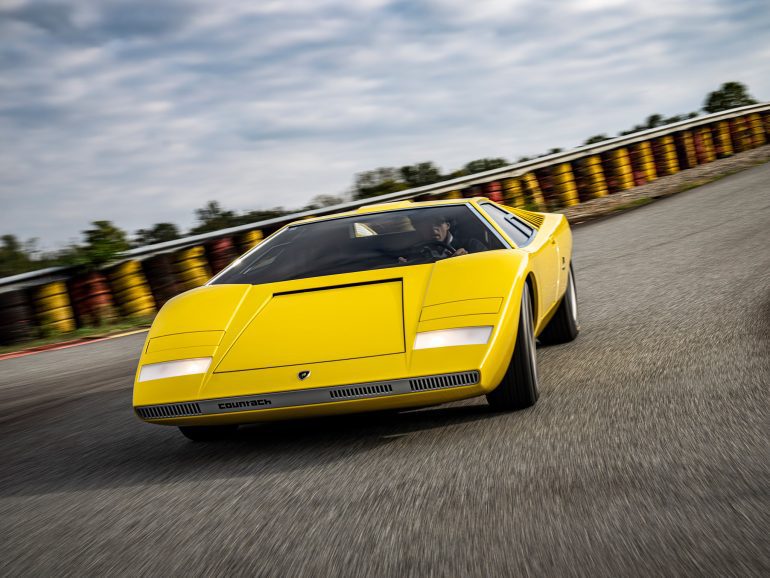
Laid the groundwork for what would become one of the most iconic sports cars of all time, the Lamborghini Countach.
Why Is This The Best Lamborghini Concept Car?
The 1971 Lamborghini Countach LP500 Concept is a pivotal car in automotive history, marking a significant evolution in sports car design and engineering. This concept car, unveiled at the Geneva Motor Show in 1971, laid the groundwork for what would become one of the most iconic sports cars of all time, the Lamborghini Countach production series.
The LP500 featured a dramatic, wedge-shaped design that was revolutionary at the time. Designed by Marcello Gandini of Bertone, its angular, sharp lines and scissor doors set a new standard for sports car aesthetics and became a signature feature for Lamborghini. Its design was not only futuristic but also functional, influencing the style of high-performance cars for decades.
The concept was built with a mid-engine layout, which was relatively novel for road cars at the time, especially for one with a 5.0-liter V12 engine. This layout improved the car's balance and handling, setting a template for future supercars.
The Countach LP500 Concept was the progenitor of the production Countach, which would continue to evolve over its nearly two-decade production run. The production Countach retained much of the concept's groundbreaking design elements and became a symbol of supercar excess and performance. Beyond its technical and design achievements, the Countach became a cultural icon, symbolizing the extreme and uncompromising vision of supercar design. It featured in numerous films, posters, and media, becoming a symbol of high performance and exotic engineering.
2. 1995 Lamborghini Cala Concept
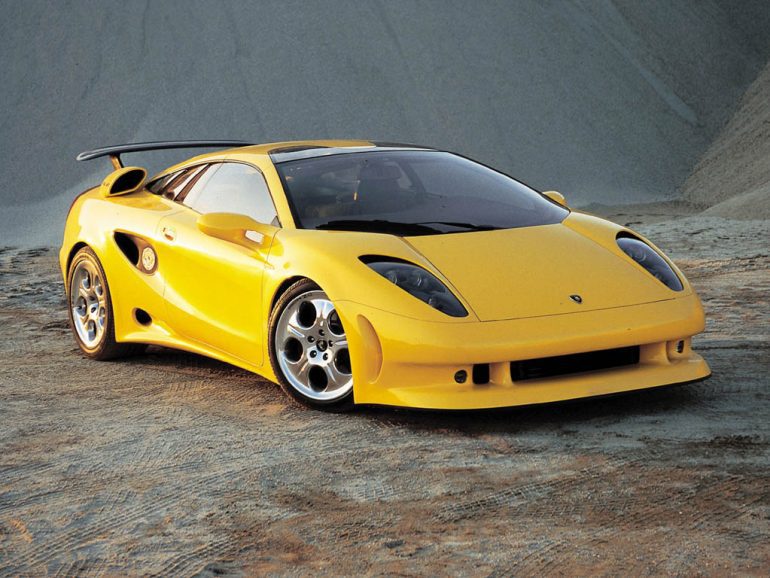
The 1995 Lamborghini Calà showcased Lamborghini's vision for a new entry-level sports car in the mid-1990s.
Why Is This The Best Lamborghini Concept Car?
The Calà was designed by the renowned Italian design firm Italdesign, led by Giorgetto Giugiaro, one of the most influential automotive designers of the 20th century. The car's design was sleek, modern, and beautifully proportioned, encapsulating the essence of what a nimble, V10-powered sports car should be. Its styling was characterized by smooth lines, an aerodynamic shape, and a distinctive Lamborghini appearance, yet it was set apart by its more rounded and accessible design compared to the more extreme models like the Diablo.
The Calà was intended to be the successor to the Lamborghini Jalpa and aimed to be an accessible entry-point into Lamborghini ownership, targeting a slightly different market than the flagship V12 models. It was designed to offer a blend of performance, style, and usability, suitable for daily driving but with the performance credentials expected of a Lamborghini.
Powering the Calà was a mid-mounted 3.9-liter V10 engine, producing an estimated 400 horsepower. This was particularly significant as it predated Lamborghini's later adoption of the V10 configuration in the Gallardo, which became one of the company's most successful models. The engine was designed to deliver impressive performance while still being suitable for everyday use.
As a concept car, the Calà was unique, with only one prototype ever produced. Its exclusivity adds to its allure, as it represents a singular vision of Lamborghini's potential future direction that was never realized in production. This one-of-a-kind status makes it a significant piece of automotive history.
3. 2012 Lamborghini Aventador J Concept

A carbon fiber, roofless, V12-engined, 700+hp, Lamborghini Aventador. Just let that thought sink in for a while.
Why Is This The Best Lamborghini Concept Car?
The 2012 Lamborghini Aventador J is an exceptionally special and unique car in the automotive world, showcasing Lamborghini's commitment to extreme design and engineering. Unveiled at the Geneva Motor Show in 2012, this car was a radical expression of open-air driving, offering a glimpse into the future of supercar design.
The Aventador J takes the already dramatic design of the standard Aventador to the extreme. It is a "barchetta" design, which means it's an open-top car without a roof or a conventional windshield, offering an unfiltered driving experience. This design choice emphasizes the car's blend of art and technology, pushing the boundaries of what's expected in a modern supercar.
Lamborghini produced the Aventador J as a one-off, a unique piece that demonstrates the brand's ability to create highly bespoke and individualized masterpieces. The fact that only one exists adds to its exclusivity and allure, making it highly desirable among collectors and enthusiasts.
The car features extensive use of carbon fiber, including a new carbon fiber fabric called "Carbonskin" that is used in the interior. This material is soft to the touch yet durable, showcasing Lamborghini's innovation in materials technology and its application in high-performance automotive design. Based on the Aventador LP 700-4, the Aventador J inherits the same formidable 6.5-liter V12 engine, delivering 700 horsepower and capable of reaching speeds of over 300 km/h (186 mph). The car's performance is further enhanced by its extremely lightweight design and improved aerodynamics.
The Aventador J is as much a work of art as it is an engineering marvel. Its design and execution represent a bold statement from Lamborghini, blending artistic creativity with automotive innovation. It's a showcase of what the brand represents: extreme, uncompromising, and distinctly Italian.
4. 2010 Lamborghini Sesto Elemento Concept
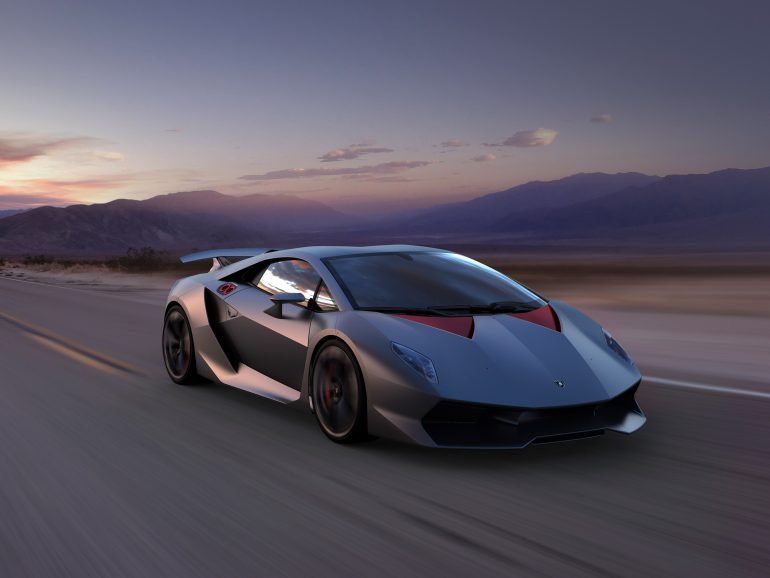
This Gallardo-based monster featurs a power-to-weight ratio of 562bhp per tonne, a 0-62mph time of 2.5 seconds and carbon fibre EVERYWHERE.
Why Is This The Best Lamborghini Concept Car?
The 2010 Lamborghini Sesto Elemento Concept is a groundbreaking vehicle that showcased extreme performance through advanced technology and materials. Unveiled at the 2010 Paris Motor Show, it's considered one of the most special and innovative concept cars
The name "Sesto Elemento" translates to "Sixth Element," which is carbon, reflecting the car's extensive use of carbon fiber. Its chassis, body, driveshaft, and suspension components were all made from carbon fiber, giving the car an extraordinarily low weight of just 999 kilograms (2,202 lbs). This extensive use of lightweight materials was revolutionary and set a new benchmark for high-performance cars.
Powered by a 5.2-liter V10 engine producing 570 horsepower, the Sesto Elemento's low weight allowed it to achieve a power-to-weight ratio of only 1.75 kilograms per horsepower, which is phenomenal. This resulted in astonishing performance figures, including a 0-100 km/h (0-62 mph) acceleration time of just 2.5 seconds.
Although initially presented as a concept, Lamborghini decided to produce a very limited number of Sesto Elemento cars. Only 20 units were created, making it one of the most exclusive Lamborghini models ever made. This rarity, combined with its cutting-edge features, made it highly desirable among collectors and enthusiasts.
The Sesto Elemento served as a technological showcase, demonstrating Lamborghini's expertise in advanced materials and lightweight construction. It highlighted the potential for future supercars, particularly in terms of combining high power with low weight for unprecedented performance.
5. 1998 Lamborghini Pregunta
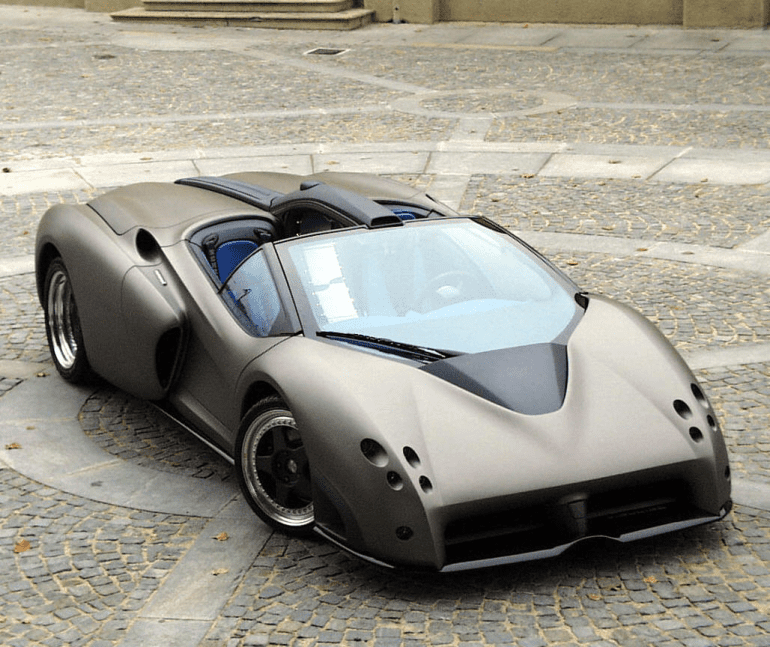
Its aerodynamic properties and a deliberately aeronautical design result in a two-seater speedster with sensations of power and dynamism.
Why Is This The Best Lamborghini Concept Car?
The Pregunta debuted at the 1998 Paris Auto Show and the 1999 Geneva Motor Show. In Spanish, PREGUNTA means "question." This car was an original way of questioning the motor world to ask if it is aware of the HEULIEZ GROUP's abilities and possibilities, a European industrial reality.
So the PREGUNTA is an aggressive act of defiance that needs to and must succeed in demonstrating the HEULIEZ Group's ability to design and produce a real car and not just a simple exhibition prototype.
This one-off was built in 1998 based on the Diablo chassis and mechanicals. According to some, it's an "ugly" car, but I rather like the aggressive styling not present in the Canto. Too bad this design hadn't appeared earlier when Lamborghini was deciding on the new replacement "Super Diablo."
HEULIEZ has dressed the refined mechanics in an outfit that can be instantly identified. It's one of a kind. It is thus a mixture of technology and extreme shapes where aerodynamic properties and combined with beauty and elegance.
A tough, powerful car, the strength of which is natural but not ostentatious, the front of the PREGUNTA reminds you of a sport-prototype vehicle while the back is more like a fighter plane. PREGUNTA gives you the sensation of supersonic flight and does it magnificently; even if the front remains typical of a racing car, a glance at the sides show that they are sculptured and planed down to guide the aerodynamics towards two air inlets that are in the shape of a streamline jet engine.
6. 1989 Lamborghini P140 Concept/Prototype
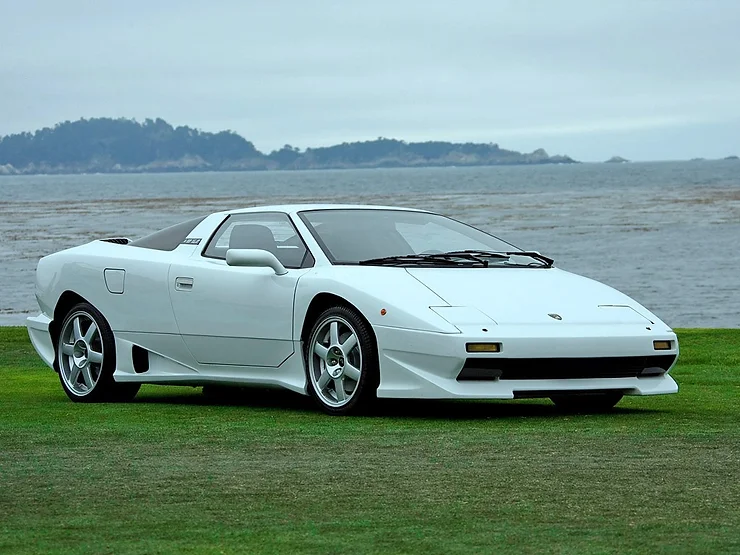
We got the Gallardo. It could have been very different as at least twice prototypes were constructed for a 'small' Lamborghini. One example was the P140.
Why Is This The Best Lamborghini Concept Car?
Lamborghini's line-up consisted of just one model for nearly two decades after the V8-engined Jalpa was canceled in 1988. The void in the Italian manufacturer's range was finally filled in March of 2003 when the Gallardo was launched. It could have been very different as at least twice prototypes were constructed for a 'small' Lamborghini. These never got beyond the prototype state for various reasons like a poor economy and new ownership.
Manufacturers from other countries had bridged the performance gap to the Italians in the 1980s. Lamborghini believed they had to combine advanced engineering with superior styling for them to distinguish themselves. For the smaller model, Gandini combined influences from the angular Jalpa and its predecessors with the new curvy shapes he penned for the Countach replacement, the Diablo.
Under the carbon fiber body panels, the new Lamborghini was even more impressive. The chassis was constructed from bonded aluminum sections, providing rigidity and lightweight. Suspension was by double wishbones all around. The really interesting part was the brand new V10 engine.
In 1989 one example was constructed with the code name 'P140.' The new 'baby Lambo' was not shown anywhere as Lamborghini concentrated all efforts on the debut of the top of the range Diablo. In 1995 the P140 made a much-delayed debut, now clothed in a brand new body designed by Giorgietto Giugiaro. Dubbed the 'Cala,' it remains one of the most beautiful Lamborghinis ever built. Sadly production was again postponed. This was the end of the P140 project, which deserved more.
7. 1966 Lamborghini 400GT Flying Star II
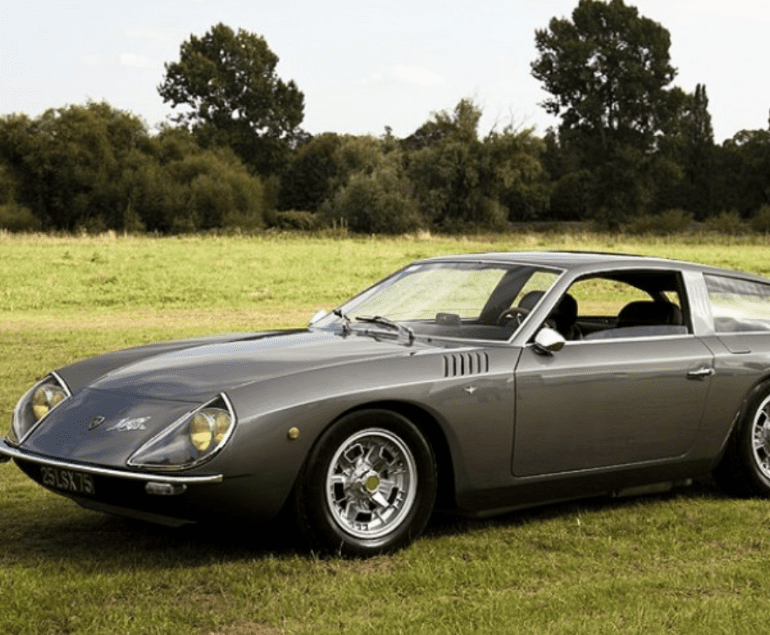
Showcasing early exploration into combining high-performance engineering with avant-garde design. A significant departure from GT designs of the day.
Why Is This The Best Lamborghini Concept Car?
At the 1966 Turin Auto Show, Touring displayed their latest car, the Flying Star II; this was the last car completed by this prestigious firm whose contributions to car design in the previous 40 years can’t surely be forgotten.
Touring designed and built the Lamborghini 350GT (see entry), the company was founded by Felice Bianchi Anderloni in 1926, but in 1966 it all came to an end, on that year’s Turin Auto Show, they prepared two new cars; a Fiat 124 convertible, and the Flying Star II, which, just like the 3500 GTZ, was mounted on a 10 cm shortened chassis.
The Flying Star II was created by a team led by Carlo Anderloni, son of the founder; the results of this Lamborghini were somewhat disappointing; the angular lines of the body, together with the controversial roof design, made the car look like a station wagon, it also was massive for only two people with luggage. When presented at the Touring factory, the Flying Star II had Borrani wire wheels installed.
Still, on the Turin Auto Show, these were replaced by the brand new Campagnolo cast magnesium wheels.
The 400GT Flying Star II marked one of the last projects by Carrozzeria Touring before the original company ceased operations in the late 1960s. This adds a layer of historical poignancy to the vehicle, representing the end of a chapter in Italian automotive design history.
8. 1999 Lamborghini L147 Canto
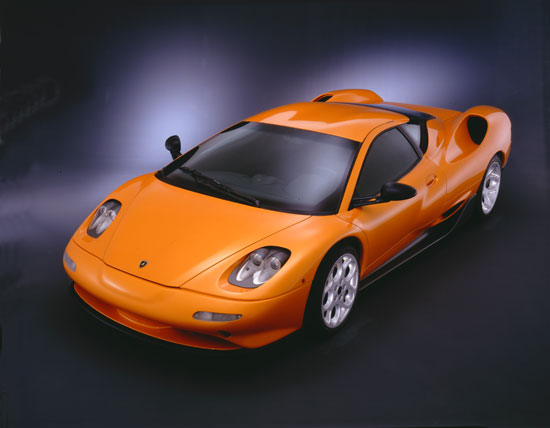
Ferdinand Piech didn't like the first one so he made them redo their homework. The result was a slightly modified Canto proposal.
Why Is This The Best Lamborghini Concept Car?
Audi Chairman Ferdinand Piech decided the 1998 Canto prototype was not what was expected of a Lamborghini, like the Diablo and the legendary Countach and Miura, so he halted the project. He was unhappy with the large, ugly rear air intakes and felt that the engine was not up to what should be expected of a pure supercar.
But during February 1999, the Lamborghini Design facility came up with a slightly modified Canto proposal. The front was facelifted, the headlight units remained almost identical, but the fog lights utilized more up-to-date poly-ellipsoïde technology. The turn indicators and driving lights were repositioned on top of the front wings instead of at the front of them as on the first Canto prototypes. However, the biggest changes were the rear; the top-mounted air intakes, now smaller and much better integrated into the sweeping lines of the Canto.
The complete engine was rethought; it remained the massive V-12, with a 6.0 Litre displacement, but the engine management and the complete electronics were changed, and the first tests showed a power increase up to 640 Bhp. According to the official press release, which Automobili Lamborghini SpA published at the end of January 1999, the production unit would be reduced to 610 Bhp. This way, the factory would maintain the same maintenance schedule as they used for the 530 Bhp Diablo's. In the same press release, Automobili Lamborghini SpA stated that this redesigned Canto prototype would be presented to the public at the 1999 Geneva Motor Show, and the Diablo would remain in production for two years. These two years would be needed to get the Canto fully developed for production.
Work then turned to a completely new project, with the Diablo eventually being replaced in late 2001 by the Murcielago.
9. 2017 Lamborghini Terzo Millennio
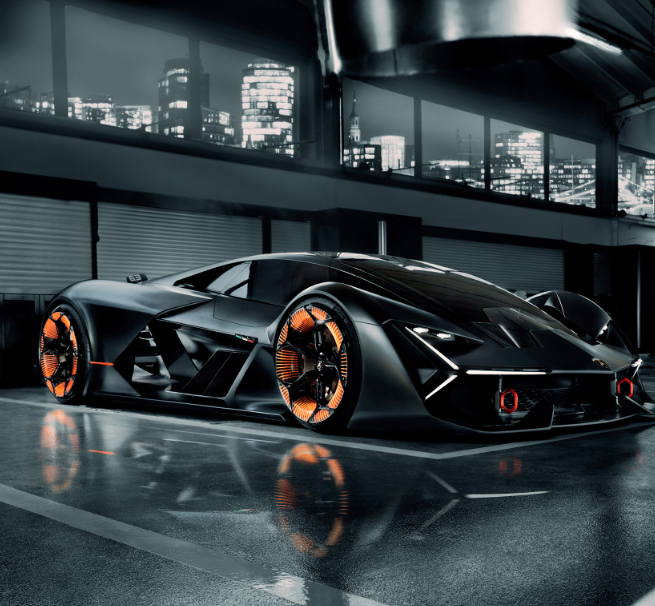
looked like nothing else: smooth, well-formed, and ultra-clean. Shape and detailing were vintage period GM, yet also somewhat Italian.
Why Is This The Best Lamborghini Concept Car?
In conjunction with the Massachusetts Institute of Technology, Lamborghini have imagined the design and technology futures of possible Lamborghini electric super sports cars. The main goal of this concept was to address five different dimensions of any future Lamborghini sports car; energy storage systems, innovative materials, propulsion system, visionary design, and emotion.
The first two are where the Massachusetts Institute of Technology comes in, with Lamborghini financing research into these areas that could lead to radical innovation in energy storage systems technology and material science.
Stefano Domenicali, Chairman and Chief Executive Officer of Automobili Lamborghini, says: “Exactly one year ago we have signed an agreement with the MIT-Italy Program at the Massachusetts Institute of Technology which marked the start of a collaboration between two outstanding entities for the creation of a project that intends to write an important page in the future of super sports cars for the third millennium.
Collaborating with MIT for our R&D department is an exceptional opportunity to do what Lamborghini has always been very good at: rewriting the rules on super sports cars. Now we are presenting an exciting and progressive concept car.
We are inspired by embracing what is impossible today to craft the realities of tomorrow: Lamborghini must always create the dreams of the next generation.”
10. 2008 Lamborghini Estoque Concept
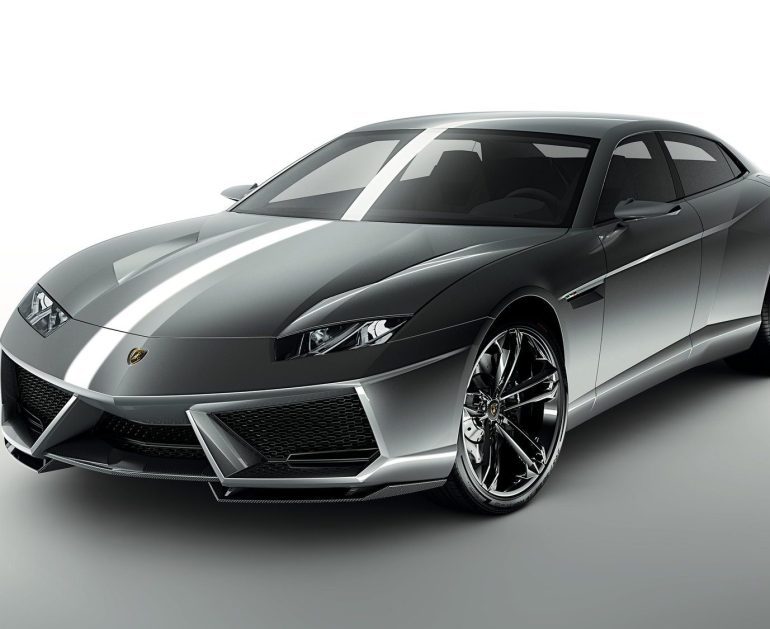
The Estoque was a radical departure for Lamborghini, being a four-door, four-seater sedan. This was a significant shift as the brand looked to expand beyond supercars.
Why Is This The Best Lamborghini Concept Car?
Paris, October 1. 2008 Lamborghini finally unveiled the new Estoque model, after no less than four teaser shots that gave away some details of this new car, the full shots are now available, and they show an impressively styled four-door super sedan.
The Lamborghini Estoque is a concept sedan that features a long, low, and wide profile, making it longer and wider than a Cadillac STS and slightly taller than a Porsche 911. With a unique and unmistakable style, the Estoque’s long wheelbase, wide track, oversized wheels, low silhouette, and bold appearance demonstrate the creativity of Lamborghini’s design applied to a groundbreaking concept sedan.
The Estoque was a radical departure for Lamborghini, being a four-door, four-seater sedan. This was a significant shift, as it expanded the potential Lamborghini portfolio beyond the two-door sports cars and supercars for which the brand is renowned. The design combined the practicality of a sedan with the aggressive styling and performance characteristics emblematic of Lamborghini.
The concept car shown in Paris was powered by a Gallardo LP560-4 engine, and it featured a permanent four-wheel drive setup. Unlike the Gallardo, the Estoque offers seating for four adults and plenty of luggage space while still providing the capability to cruise at 200 mph.
The Estoque’s design is characterized by sharp edges, straight cuts, and creases, which contribute to its razor-sharp appearance. Despite being showcased in 2008, the design of the Estoque is still considered relevant and impressive today.



